Compatibility is the name of the game when it comes to an aquarium, especially a reef tank. No fish can be considered 100% reef safe. That’s also true for many invertebrates.
Reef-compatible fish and invertebrates are plentiful but obviously care must be taken to choose fish that will be a good fit with your corals. Also, hardy fish over more difficult to care for fish are preferred.
Let’s run down the top ten list of fish to consider.
Top 10 Reef Safe Fish
Reef-safe saltwater fish are coral-friendly and may also actually be beneficial to your reef tank. This list features some of the most recommended and popular saltwater reef-safe fish. Most are peaceful and beginner-friendly although exceptions are noted.
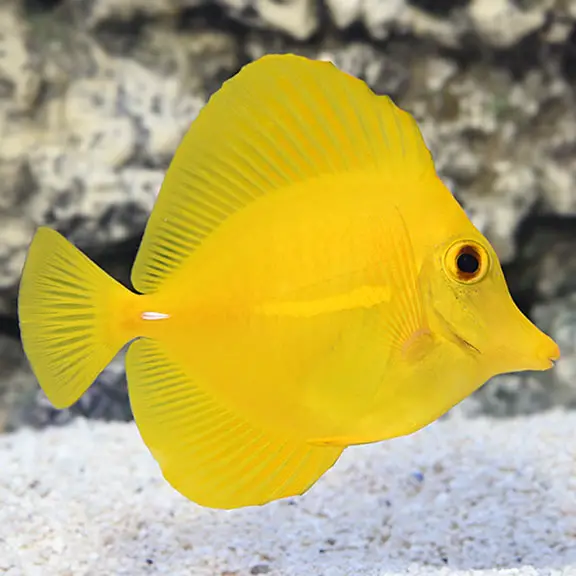
10. Yellow Tang
The quintessential saltwater fish, the Yellow Tang (Zebrasoma flavescens). This vibrant yellow fish is an active swimmer and good for eating algae as well. It is an herbivore which means your corals are safe. It can grow up to 8 inches so it isn’t recommended for nano aquariums. 100 gallons and up is best.
- Minimum Tank Size: 100 Gallons
- Difficulty: Beginner
- Diet: Herbivore
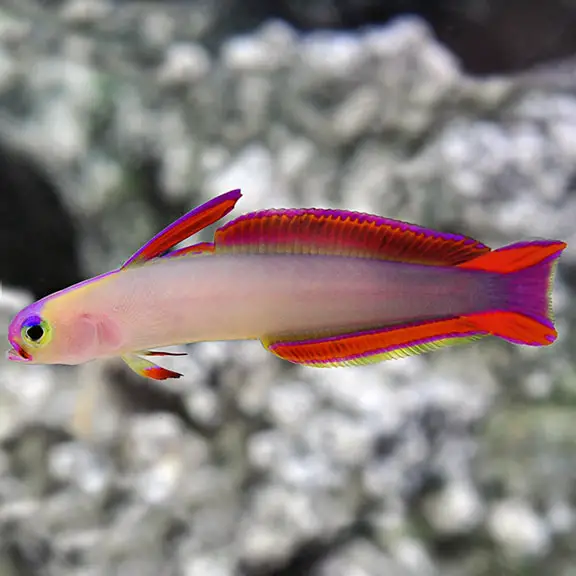
9. Firefish
This is a very active fish in the Goby family. It’s quite a hardy and the purple variant (Nemateleotris decora) pictured is gorgeous. The purple firefish is a little more expensive than the more common red to white variation (Nemateleotris magnifica).
- Minimum Tank Size: 20 Gallons
- Difficulty: Beginner
- Diet: Carnivore
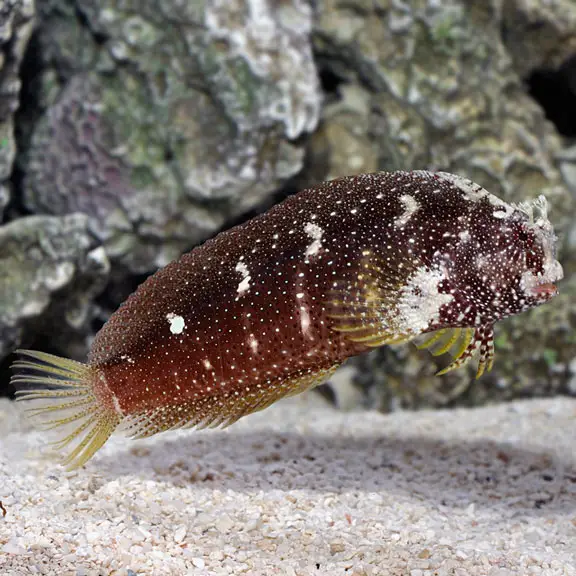
8. Starry Blenny
Personality is what makes this little guy a hoot. The Starry Blenny (Salarias ramosus) doesn’t constantly swim around your tank but will perch on rocks searching for algae to graze on. It’s a great utilitarian fish for a reef tank.
- Minimum Tank Size: 30 Gallons
- Difficulty: Beginner
- Diet: Herbivore
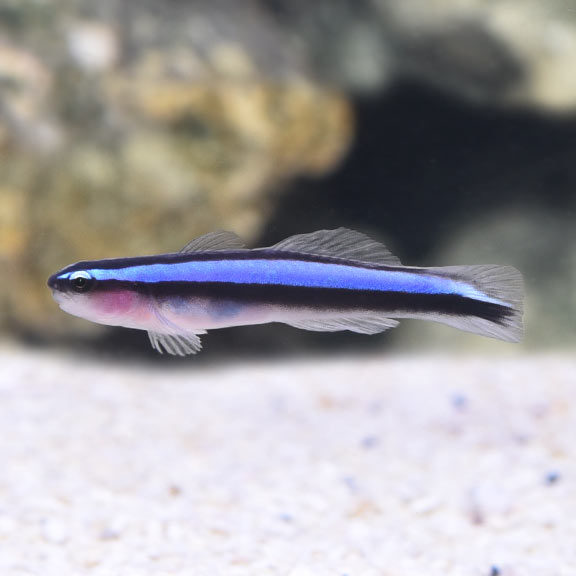
7. Neon Blue Goby
These vibrant blue fish are quite small yet beautiful. A Neon Blue Goby (Elactinus oceanops) is a great addition to a nano reef tank. They should be kept alone or as a mated pair. Otherwise, they will become aggressive toward other Neon Blue Gobies.
- Minimum Tank Size: 10 Gallons
- Difficulty: Beginner
- Diet: Carnivore
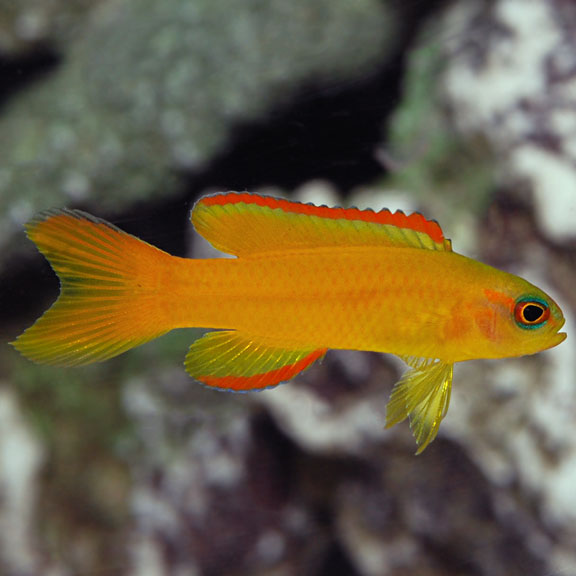
6. Yellow Assessor
This beautiful yellow coral-friendly fish has stunning fin colorations. Yellow Assessors (Assessor flavissimus) are timid and like to stay in groups in shaded areas under rockwork. It’s rather expensive so purchasing enough for a school would be cost-prohibitive but they will also do well alone.
- Minimum Tank Size: 30 Gallons
- Difficulty: Intermediate
- Diet: Carnivore
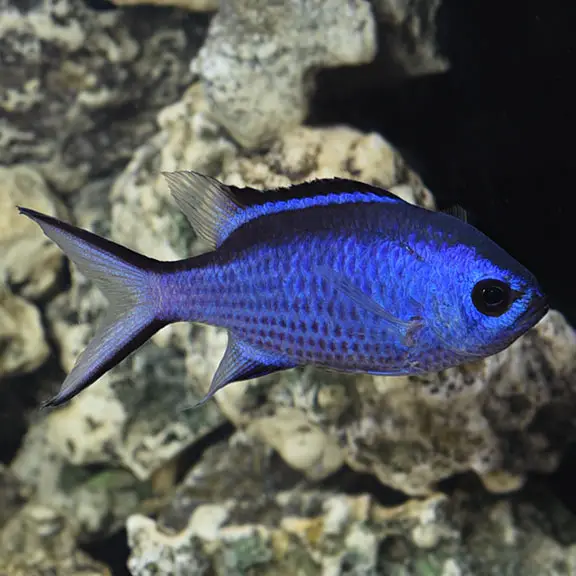
5. Blue Reef Chromis
A schooling fish, you’ll want to purchase a group as opposed to an individual. They are active and occupy the upper portion of your tank. Blue Reef Chromis (Chromis cyaneus) are beautiful to watch and it’s nice they enjoy the less occupied top of your aquarium.
- Minimum Tank Size: 30 Gallons
- Difficulty: Beginner
- Diet: Omnivore
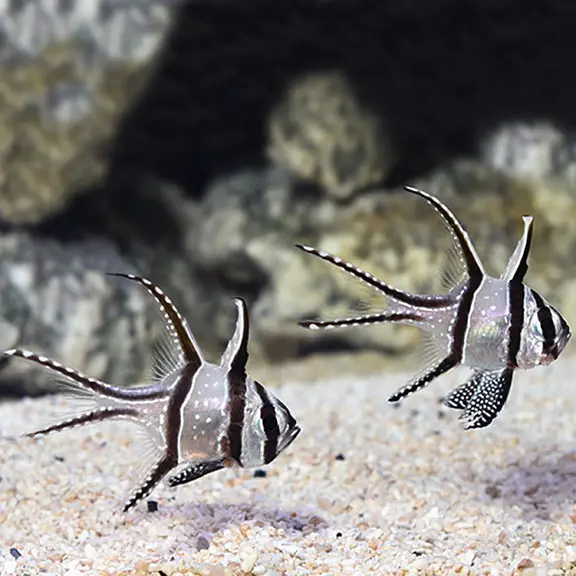
4. Banggai Cardinal
This schooling fish is best kept in small groups. Caves and outcroppings are ideal as they tend to be rather sedentary. Banggai Cardinalfish (Pterapogon kauderni) do not like strong light so providing some shaded area is important to give them refuge.
- Minimum Tank Size: 30 Gallons
- Difficulty: Beginner
- Diet: Carnivore
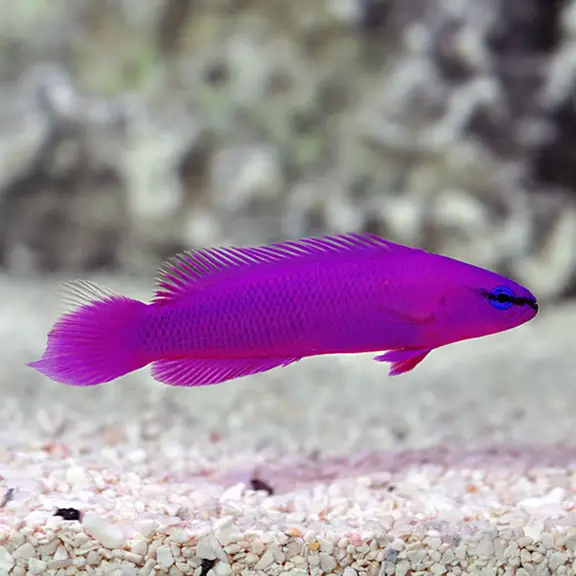
3. Orchid Dottyback
This beautiful and active purple/lavender fish darts in and out of rock work, feeding on pests such as bristle worms. The Orchid Dottyback (Pseudochromis fridmani) is aggressive toward other Pseudochromis. It is also prone to jumping so a top should be added to your aquarium.
- Minimum Tank Size: 30 Gallons
- Difficulty: Beginner
- Diet: Carnivore
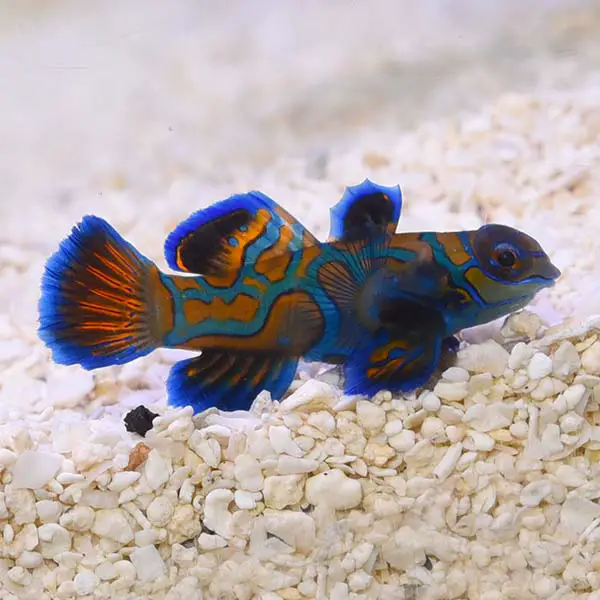
2. Mandarin Dragonette
The Mandarin Dragonette (synchiropus splendidus) is a great reef tank fish but the most difficult on this list. My sentimental favorite. Probably the most gorgeous fish you can own. It is reclusive and wild-caught Mandarins are difficult to feed. Captive-bred fish are much more likely to survive.
- Minimum Tank Size: 100 Gallons
- Difficulty: Expert
- Diet: Carnivore
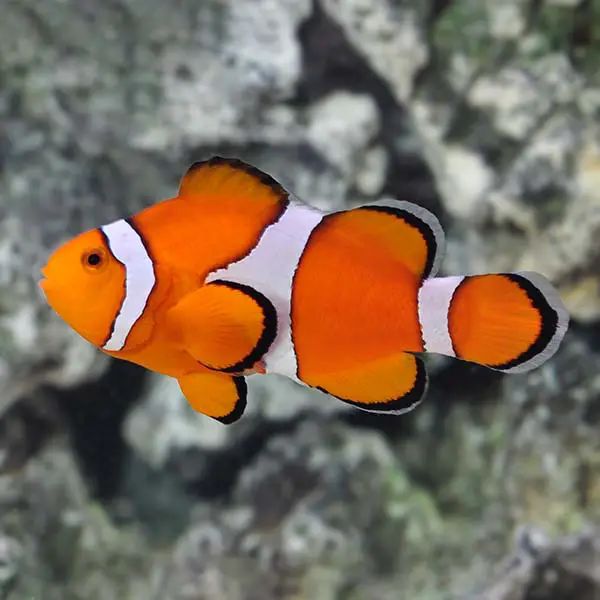
1. Clownfish
The Clownfish (Amphiprion ocellaris or Amphiprion percula) is probably the most popular fish, and for good reason. It is super hardy and has a very frisky personality. Reminds me of a puppy version of a fish. Not to mention the amazing symbiotic relationship they have with anemones. You can’t go wrong with one of these little guys.
- Minimum Tank Size: 20 Gallons
- Difficulty: Beginner
- Diet: Omnivore
Top 10 Reef Safe Invertebrates
Invertebrates are by definition, animals without a backbone. In the saltwater aquarium hobby, inverts are generally snails, shrimp, crabs, worms, clams, and anemones.
A good invert for a reef tank will obviously be coral-friendly, but it also should be either helpful or attractive.
The following list will start with more utilitarian reef-safe inverts and work up toward the most beautiful and entertaining options.
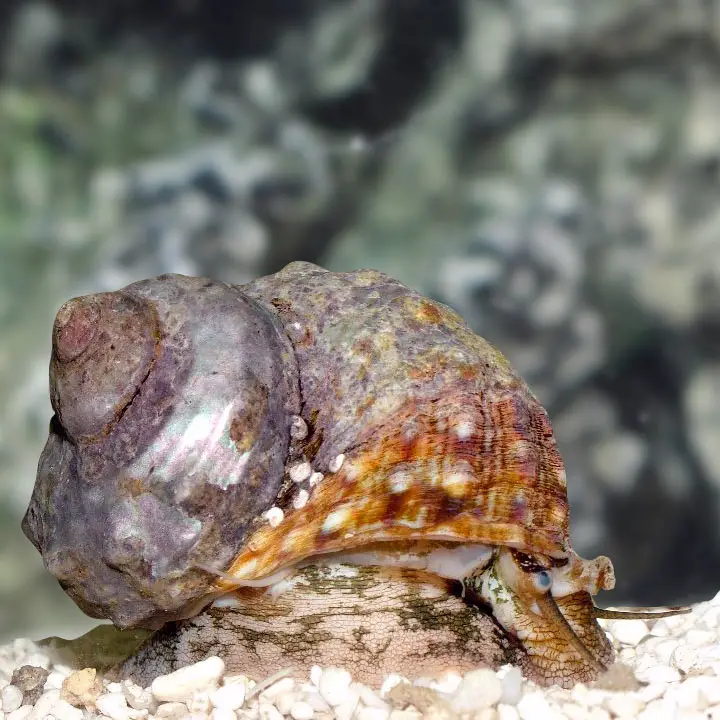
10. Turbo Snail
This large snail is a super algae grazer. It also earns its name as a turbo. They really do get around the tank in a hurry for a snail. A really great clean-up crew member. You’ll want to make sure that your corals are properly glued down since Turbo Snails (Turbo fluctuosa) can push rocks and corals over when they’re feeding.
- Minimum Tank Size: 10 Gallons
- Difficulty: Beginner
- Diet: Herbivore
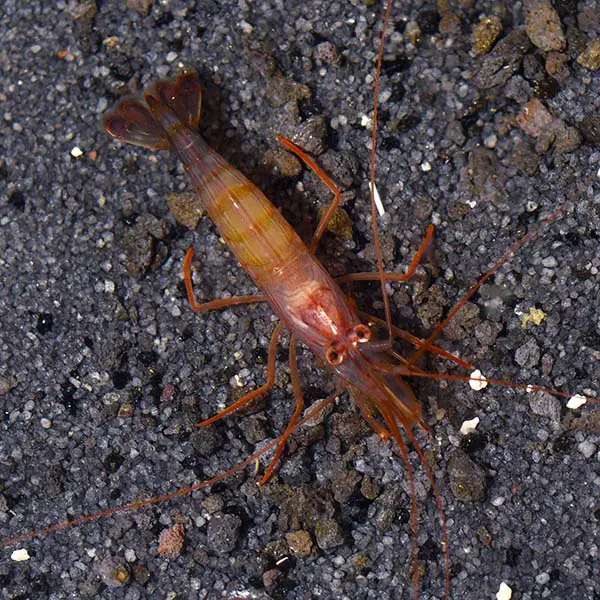
9. Peppermint Shrimp
While not the most beautiful of shrimp available in the saltwater aquarium hobby, it is still very entertaining to watch, as are all shrimp. The bonus with the Peppermint Shrimp (Lysmata wurdemanni) is it is known to eat Aiptasia.
- Minimum Tank Size: 20 Gallons
- Difficulty: Beginner
- Diet: Carnivore
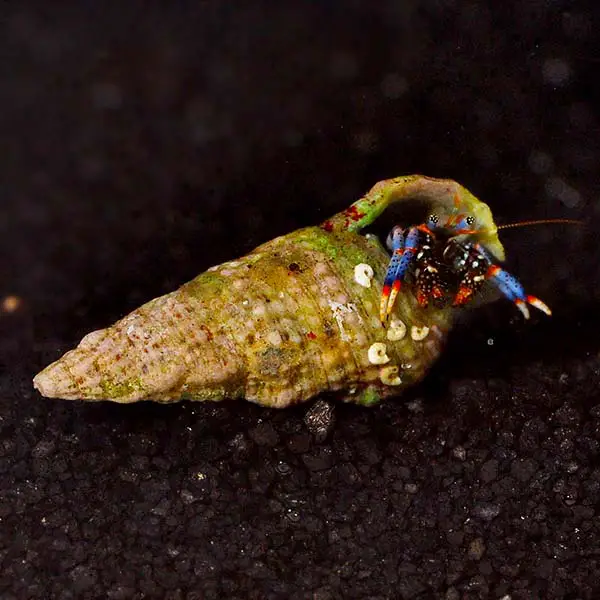
8. Blue Leg Hermit Crab
Another great clean-up crew member. They are known to eat hair algae and cyanobacteria. Blue Leg Hermits (Clibanarius tricolor) are interesting to watch wander your rock work. Their vivid banded blue legs are surprisingly very bright and make a colorful addition for an invert.
- Minimum Tank Size: 10 Gallons
- Difficulty: Beginner
- Diet: Omnivore
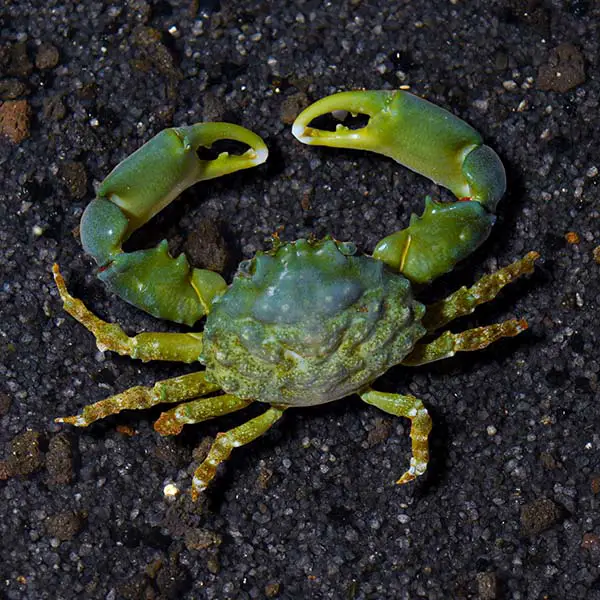
7. Emerald Crab
When it comes to clean-up crew, the Emerald Crab (Mithraculus sculptus) is my favorite. Loads of personality and an awesome worker. They tend to stay on the rockwork picking at pests, algae, detritus, and any food they find. They’re even known to eat bubble algae.
- Minimum Tank Size: 10 Gallons
- Difficulty: Beginner
- Diet: Omnivore
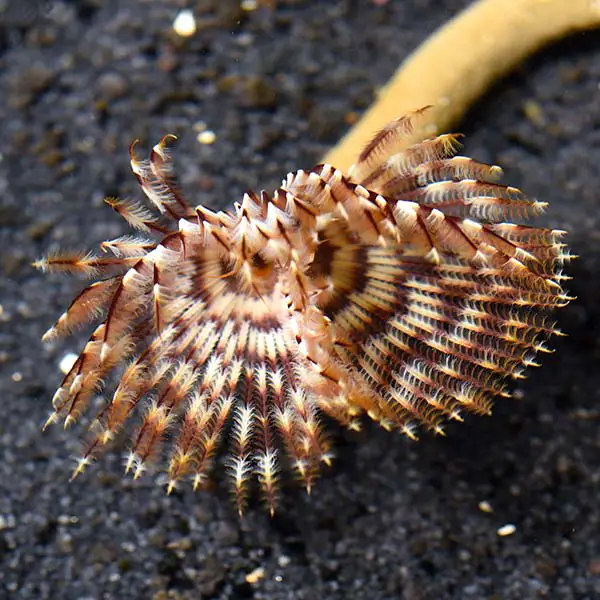
6. Feather Duster
A relative of the earthworm but much more beautiful. It is a filter feeder that extends its feather-like appendage out the top of a tube it builds to feed. The Feather Duster (Sabellastarte sp.) is a very unique invert that can help add a bit of diversity to any reef tank.
- Minimum Tank Size: 20 Gallons
- Difficulty: Beginner
- Diet: Omnivore
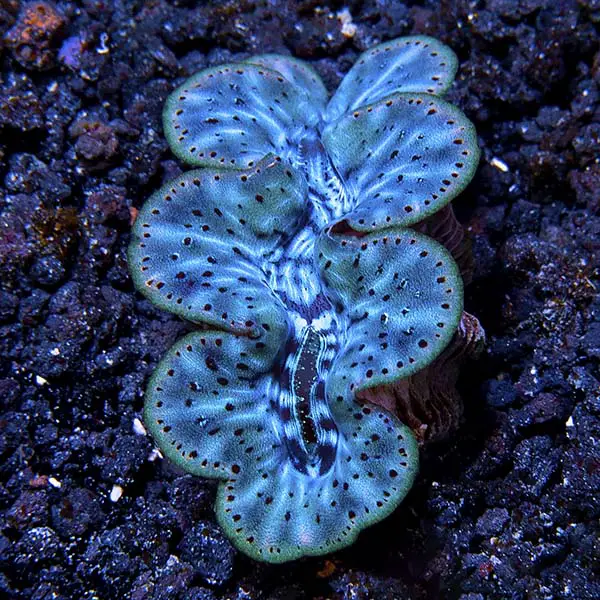
5. Maxima Clam
The Maxima Clam (Tridacna maxima) is a beautiful invertebrate to add to your reef aquarium. It isn’t the easiest to care for but isn’t considered difficult. They require strong light and good flow to thrive. Small clams under 2 inches shouldn’t be subjected to as much strong light as larger clams.
- Minimum Tank Size: 20 Gallons
- Difficulty: Intermediate
- Diet: Photosynthetic
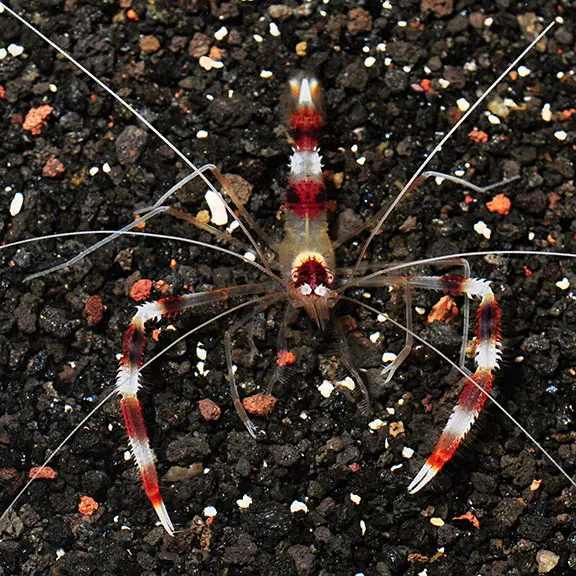
4. Coral Banded Shrimp
The beautiful and entertaining Coral Banded Shrimp (Stenopus hispidus) is not only reef-safe but also known to eat bristle worms. It is very active compared to some other shrimp as it scavenges your tank. It shouldn’t be kept with other Coral Banded Shrimp though since they are territorial.
- Minimum Tank Size: 10 Gallons
- Difficulty: Beginner
- Diet: Carnivore
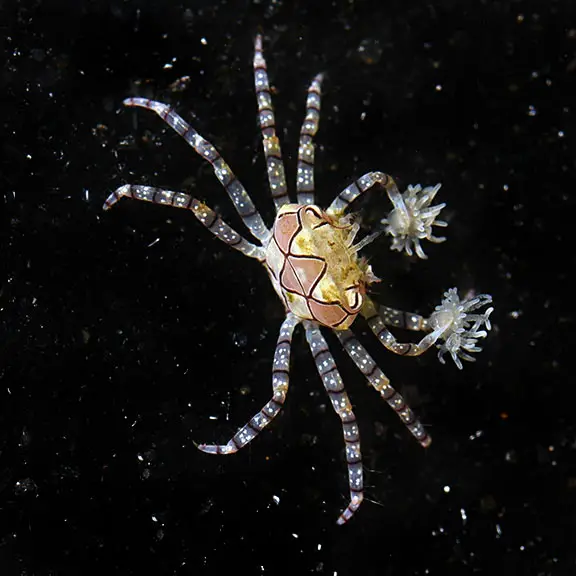
3. Pom Pom Crab
Pom Pom Crabs (Lybia sp.) are awesome little crabs that hold 2 small anemones – one in each front claw. They use the anemones for defense and as tools for picking up food. They’re a great clean-up crew addition that is more unique than many other choices.
- Minimum Tank Size: 10 Gallons
- Difficulty: Beginner
- Diet: Omnivore
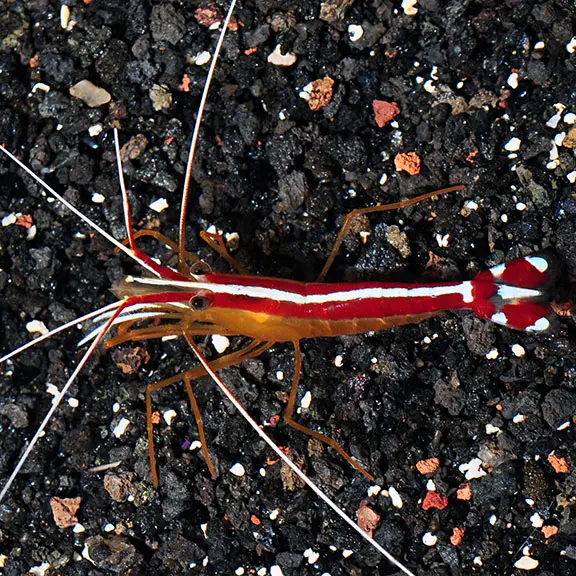
2. Scarlet Cleaner Shrimp
The Scarlet Cleaner Shrimp (Lysmata amboinensis) is an amazing invert and extremely entertaining to watch as it cleans parasites off your fish. They prefer to live in pairs but can live alone. They’re omnivores and are not only great for the health of your fish but great for helping keep your reef aquarium clean.
- Minimum Tank Size: 10 Gallons
- Difficulty: Beginner
- Diet: Carnivore
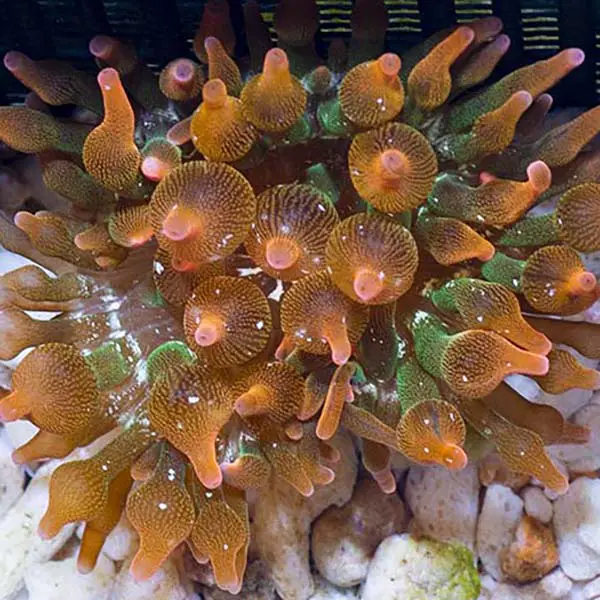
1. Bubble Tip Anemone
The Bubble Tip Anemone (Entacmaea quadricolor) is a wonderful addition. In a well-maintained tank, they will flourish, splitting and multiplying often. Bubble Tips are gorgeous and the #1 reef-safe fish, the clownfish, loves to call them home. They are an awesome pick and fun to watch a frisky clownfish dart in and out of the anemone’s tentacles.
I should note that bubble tip anemones aren’t the best reef-safe choice since they will occasionally free-float through your aquarium and change location. They can sting other corals and you may need to move them.
- Minimum Tank Size: 30 Gallons
- Difficulty: Intermediate
- Diet: Primarily Photosynthetic/Carnivore
Bonus: Top 10 Colorful Reef Safe Community Fish
Since originally writing this article we’ve gotten a lot of requests about colorful reef-compatible fish.
Our original list contained some colorful and cool reef-safe fish but most are fairly common and many aren’t the most colorful coral-compatible options. This new list will only focus on the more brightly colored and unique reef-safe fish we haven’t already mentioned.
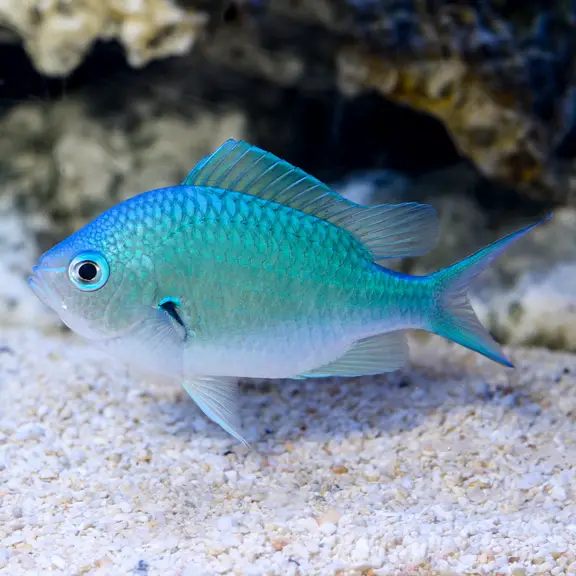
10. Blue/Green Chromis
Blue/Green Chromis (Chromis sp.) are great peaceful schooling fish and while they may be the least colorful on this list, they are quite beautiful with their shimmering blue/green coloration. They are also quite hardy and beginner-friendly.
- Minimum Tank Size: 30 Gallons
- Difficulty: Beginner
- Diet: Omnivore
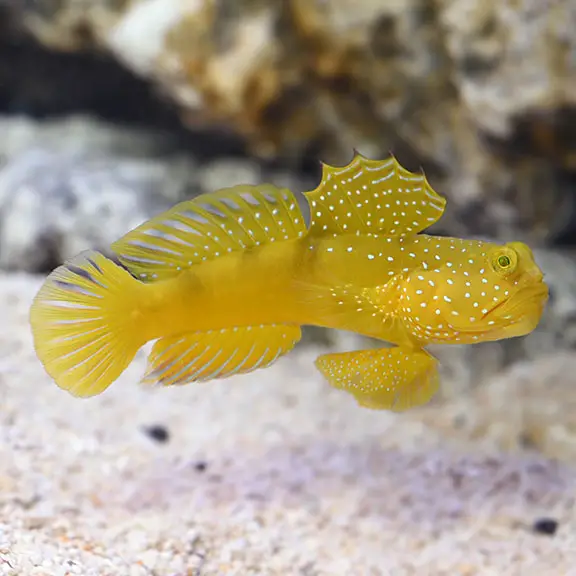
9. Watchman Goby
The beautiful and vibrant yellow Watchman Goby (Cryptocentrus cinctus) has a speckled face and very attractive fins. It is also very easy to care for and a great addition to any reef aquarium. They are sand sifters that can help keep your sand bed looking pristine.
- Minimum Tank Size: 30 Gallons
- Difficulty: Beginner
- Diet: Carnivore
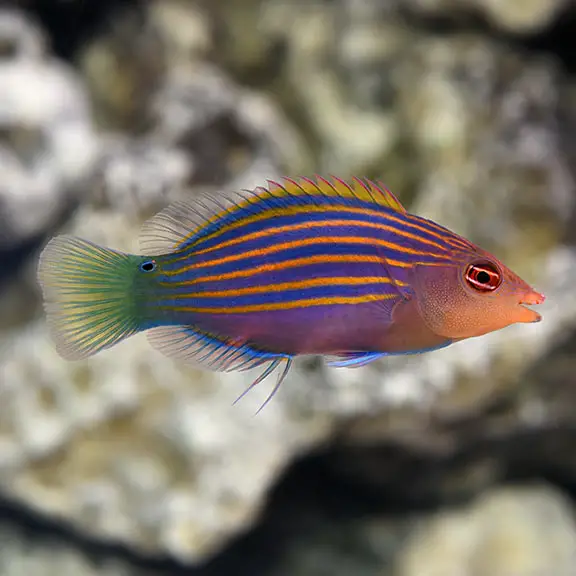
8. Six Line Wrasse
The Six Line Wrasse (Pseudocheilinus hexataenia) is a very colorful and attractive striped fish that is very energetic. It is very hardy but it can be a little aggressive toward other wrasse or very timid similarly sized or smaller fish. It’s an excellent addition that will eat pests like bristle worms in the rockwork.
The one concern is that since it’s such an active fish it has a tendency to jump. It may not be the best choice for open-top tanks.
- Minimum Tank Size: 55 Gallons
- Difficulty: Beginner
- Diet: Carnivore
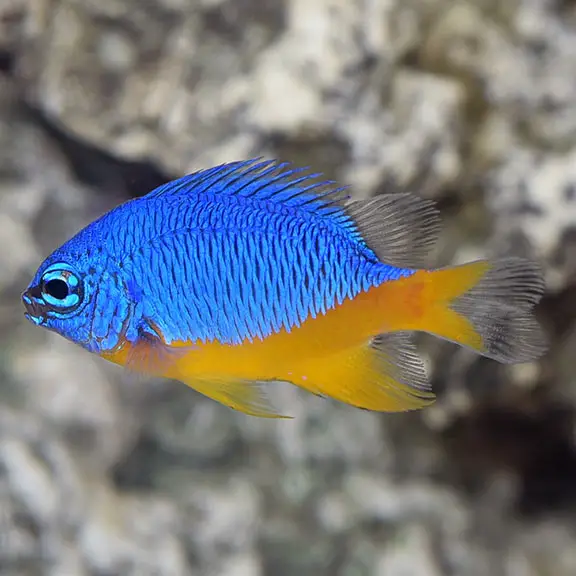
7. Azure Damselfish
The beautiful bright blue and yellow two-tone Azure Damsel (Chrysiptera hemicyanea) is a common choice for beginners due to its toughness, stunning good looks, and affordable price. All damsels are a little territorial and should only be kept with more peaceful fish in larger aquariums or fish that are significantly larger.
- Minimum Tank Size: 30 Gallons
- Difficulty: Beginner
- Diet: Omnivore
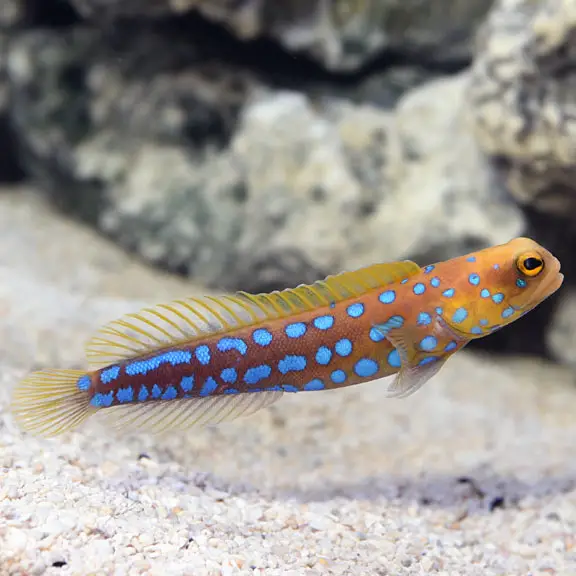
6. Blue-Spotted Jawfish
The Blue-Spotted Jawfish (Opistognathus rosenblatti) is a burrowing fish that can be territorial toward similar shaped and sized fish. It’s a very hardy choice making it a great beginner fish although they are usually quite expensive. Due to its preference for burrowing it should be kept in a large aquarium with a deep substrate.
- Minimum Tank Size: 30 Gallons
- Difficulty: Intermediate
- Diet: Carnivore
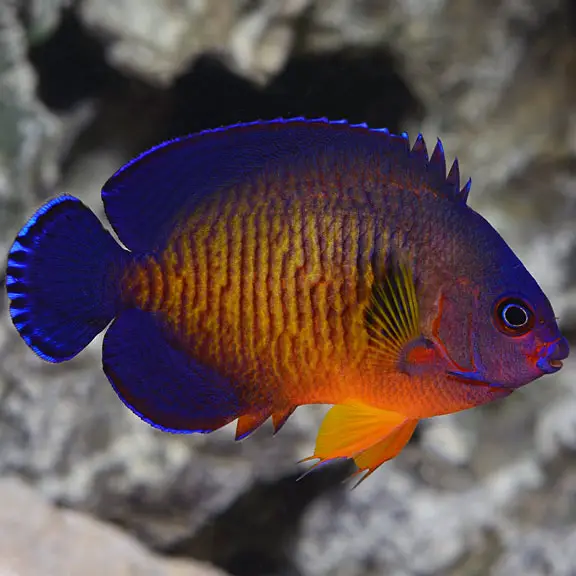
5. Coral Beauty
Many Angelfish can be quite large or not as well suited for a reef aquarium, but the Coral Beauty (Centropyge bispinosa) is a popular choice that stays small. If well fed it should fit well in a reef tank but it has been known to nip at some SPS, LPS, and soft corals. It is another good beginner choice due to its ease of care.
- Minimum Tank Size: 70 Gallons
- Difficulty: Beginner
- Diet: Omnivore
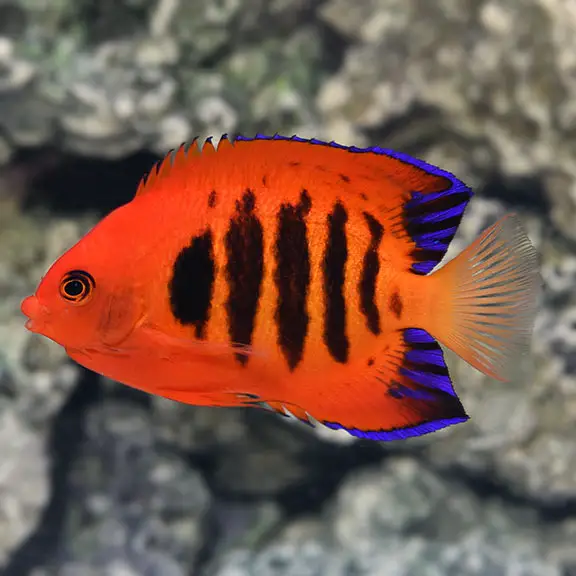
4. Flame Angelfish
Flame Angels (Centropyge loricula) have a lot in common with Coral Beauties. They’re both Angelfish and need to be fed well to prevent nipping at corals. Where they begin to differ is aggressiveness and coloration. Flame Angels are much more vibrant than Coral Beauties. The bright orange/red color is incredible. They are more aggressive than a Coral Beauty so they should be added to your aquarium last to help prevent territorial behavior.
- Minimum Tank Size: 70 Gallons
- Difficulty: Intermediate
- Diet: Omnivore
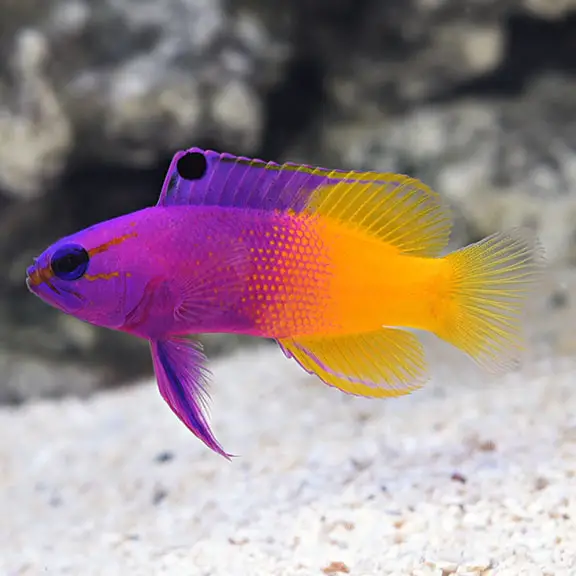
3. Royal Gramma
Royal Grammas (Gramma loreto) are very popular colorful reef-safe fish. Generally, quite hardy they make a good choice for beginners. Their coloration is their claim to fame however they are rather reclusive and prefer hiding in the rockwork. They will come out during feeding. Once they begin to get more comfortable in your tank they will come out more often.
- Minimum Tank Size: 30 Gallons
- Difficulty: Beginner
- Diet: Carnivore
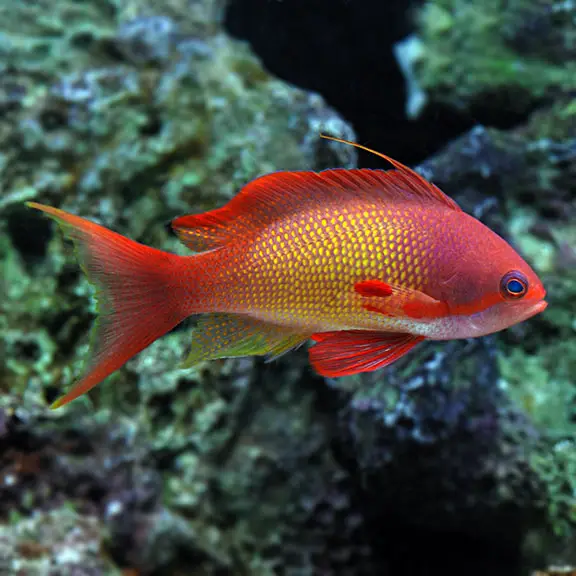
2. Lyretail Anthias
More difficult to care for, Lyretail Anthias (Pseudanthias squamipinnis) may not be the best choice for a beginner, but their coloration may have you wanting to try caring for one. Males should not be kept with other males. Also, they do best in aquariums over 125 gallons and without other fish to disturb them.
- Minimum Tank Size: 125 Gallons
- Difficulty: Intermediate
- Diet: Carnivore
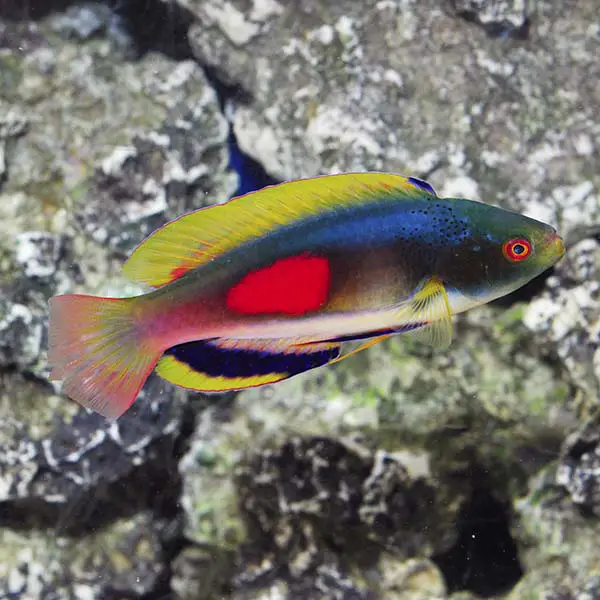
1. Fairy Wrasse
To be fair, the Fairy Wrasse isn’t just one kind of fish but more of a subcategory of the wrasse family. There is a very wide variety of colors among fairy wrasses. Probably the most striking fairy wrasse in my humble opinion is the Tonga Scott’s Fairy Wrasse (Cirrhilabrus scottorum).
There are a few different Scott’s Fairy Wrasses and all look great. Also, they are all quite expensive. However, Fairy Wrasses in general can be inexpensive depending on the type. The more colorful the wrasse the more you can expect to pay in general.
Fairy Wrasses are easy to intermediate in their care needs but not a bad choice for beginners if you can find one you like that isn’t terribly expensive. They’re reef-compatible and one of the more unique choices on this list.
- Minimum Tank Size: 90 Gallons
- Difficulty: Beginner
- Diet: Carnivore
What saltwater fish and invertebrates are not reef-safe?
Top 10 fish and invertebrates to avoid in a reef tank
There are a lot of popular saltwater fish and inverts that are unfortunately not reef-compatible. We’ll be speaking in general terms.
While we may list a category as non-coral-safe, there are always exceptions to the rule. If you decide to explore alternatives please do your homework before you make a choice that will cause problems for your corals or for your fish or inverts.
Let’s run down the list of some of the most common ones to be aware aren’t good picks.
- Starfish
- Some starfish can be reef-compatible but the majority can harm corals and invertebrates in your saltwater aquarium.
- Urchins
- Urchins are poor choices for reef tanks because they love to feed on coral. They are also prone to pushing over rocks and their needles could harm coral.
- Filefish
- Filefish are unique and quite popular among many, although I personally don’t care for their looks. In any event, they should generally be avoided in the reef aquarium since they feed on some coral.
- Pufferfish
- Pufferfish make for a poor choice mostly because they will feed on smaller fish and invertebrates that you will want to keep in your reef aquarium. They also prefer low flow and many reef tanks need higher flow.
- Seahorses
- Seahorses are very compelling but a bad choice for the reef aquarium. Seahorses need very low flow, otherwise, they will be blown around your aquarium. Also, they need to be able to latch their tales onto something to hold themselves in place. This will either harm coral or the seahorse.
- Triggerfish
- Triggerfish are very aggressive and will rapidly devour small inverts and small fish that you will likely want to keep in your reef tank.
- Butterflyfish
- Butterflyfish are mostly polyp eaters and therefore a very poor choice for a reef tank. There are some butterflyfish that may be reef-compatible but research thoroughly before making a purchase.
- Grouper
- Grouper are beautiful fish but they are carnivorous and grow very large. They will consume smaller fish and invertebrates quickly.
- Eels
- Eels are elegant, if not slightly creepy, choices for a saltwater aquarium but they are quite aggressive and will decimate small fish and inverts.
- Lionfish
- Lionfish are very popular and gorgeous saltwater fish that works well in a FOWLR aquarium. Like many of the previously mentioned fish, they should be avoided in the reef aquarium because of their size and the fact that they will consume smaller fish and inverts.
What does it mean if a fish is not reef-safe?
Reef-safe primarily means that the fish could be a threat to your corals. That is not the only factor though when considering if a fish is reef-compatible.
Many fish are quite aggressive and will consume beneficial smaller fish and invertebrates that are more desirable or even necessary in a reef aquarium.
Another factor that can cause a fish to fall into the “not reef-safe” category is if a coral environment would be unsafe for the fish. A seahorse is a good example of this. Seahorses need low flow and safe items to hold on to. Reef tanks generally have higher flow and most coral is somewhat aggressive and could easily harm the seahorse.
It should be noted that just because a category or even a specific fish is not considered reef-safe doesn’t mean there aren’t exceptions or even ways to work around the problems. If you have a particular desire for a fish and want to have coral as well, do some research and find out what the problems are specifically. Also, some categories of fish, like butterflies, are considered not reef-compatible but there are individuals in the category that are coral-friendly.
In Conclusion
There is a lot of reef-compatible fish and invertebrates available to stock your aquarium with, however, these are the best of the bunch.
Be sure and do your research on your choices to know the specific needs of each and its compatibility with other fish. Each on these lists will have their own specific needs and challenges.